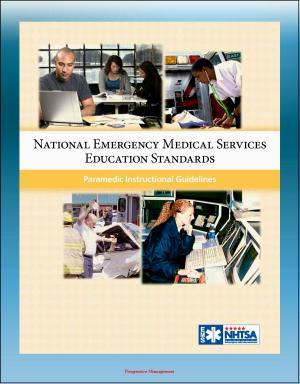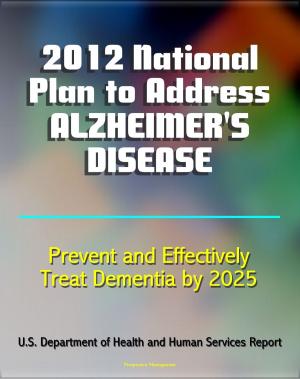The Opioid Epidemic: Narcotics, Heroin, Pill Mills, Painkiller Addiction, Medical Prescribing Practice for Pain Management, Child Welfare, Neonatal Abstinence Syndrome (NAS), Naloxone, Narcan
Nonfiction, Health & Well Being, Medical, Patient Care, Pain Medicine, Self Help, Addiction, Drug Dependence| Author: | Progressive Management | ISBN: | 9781311239495 |
| Publisher: | Progressive Management | Publication: | May 7, 2016 |
| Imprint: | Smashwords Edition | Language: | English |
| Author: | Progressive Management |
| ISBN: | 9781311239495 |
| Publisher: | Progressive Management |
| Publication: | May 7, 2016 |
| Imprint: | Smashwords Edition |
| Language: | English |
Professionally converted for accurate flowing-text e-book format reproduction, this unique collection provides comprehensive information on the ongoing opioid addiction epidemic.
Contents include: Examining the Opioid Epidemic * Combating the Opioid Abuse Epidemic: Professional and Academic Perspectives * What Are the State Governments Doing to Combat the Opioid Abuse Epidemic? * What is the Federal Government Doing to Combat the Opioid Abuse Epidemic? * Obama Administration Announces Additional Actions to Address the Prescription Opioid Abuse and Heroin Epidemic
Opioids are a powerful class of drugs prescribed to treat severe pain. When used appropriately, these drugs provide much needed relief to patients after a surgical procedure or during treatment for cancer. Unfortunately, opioids also have qualities that make them addictive and prone to abuse. The goal of today's hearing is to help us gain a better understanding of why opioid use has risen dramatically in the past 15 years and how we can best curtail abuse. Put simply, opioid abuse has become an epidemic and a significant public health problem. While it puts serious strains on our health care system, including Medicare and other federal programs, the most devastating consequence of opioid abuse is the human impact. Opioid abuse takes a major toll on families and children often persisting for generations. The statistics are staggering. Opioids are prescribed in such quantities that every adult in the United States could have a month's supply. Approximately, 7,000 people show up in an emergency room each day for treatment of problems associated with prescription opioid abuse. One opioid-related death takes place in our country almost every 30 minutes.
Nearly all of us have been touched by the epidemic of prescription drug abuse or have heard the horrific personal stories of its effects on peoples' lives. It is a problem cities and rural states, of rich and poor, of old and young. This is a public health crisis across the nation, and the statistics are staggering. Almost 19,000 Americans died in 2014 from prescription opioid overdoses. This is the equivalent of 52 people a day, and represents a 16 percent increase in deaths from the year before. What is particularly tragic is that these deaths are preventable. The epidemic is a public health crisis that requires a multi-faceted response. We need strategies to prevent drug abuse and addiction. We need to identify patients who are at risk. We need to prevent people from overdosing. We need to educate providers about how to prescribe opioids responsibly. And we need to ensure that people who do become addicted get the help they need. We must also not lose sight of the importance of providing adequate pain management to people who need it.
Professionally converted for accurate flowing-text e-book format reproduction, this unique collection provides comprehensive information on the ongoing opioid addiction epidemic.
Contents include: Examining the Opioid Epidemic * Combating the Opioid Abuse Epidemic: Professional and Academic Perspectives * What Are the State Governments Doing to Combat the Opioid Abuse Epidemic? * What is the Federal Government Doing to Combat the Opioid Abuse Epidemic? * Obama Administration Announces Additional Actions to Address the Prescription Opioid Abuse and Heroin Epidemic
Opioids are a powerful class of drugs prescribed to treat severe pain. When used appropriately, these drugs provide much needed relief to patients after a surgical procedure or during treatment for cancer. Unfortunately, opioids also have qualities that make them addictive and prone to abuse. The goal of today's hearing is to help us gain a better understanding of why opioid use has risen dramatically in the past 15 years and how we can best curtail abuse. Put simply, opioid abuse has become an epidemic and a significant public health problem. While it puts serious strains on our health care system, including Medicare and other federal programs, the most devastating consequence of opioid abuse is the human impact. Opioid abuse takes a major toll on families and children often persisting for generations. The statistics are staggering. Opioids are prescribed in such quantities that every adult in the United States could have a month's supply. Approximately, 7,000 people show up in an emergency room each day for treatment of problems associated with prescription opioid abuse. One opioid-related death takes place in our country almost every 30 minutes.
Nearly all of us have been touched by the epidemic of prescription drug abuse or have heard the horrific personal stories of its effects on peoples' lives. It is a problem cities and rural states, of rich and poor, of old and young. This is a public health crisis across the nation, and the statistics are staggering. Almost 19,000 Americans died in 2014 from prescription opioid overdoses. This is the equivalent of 52 people a day, and represents a 16 percent increase in deaths from the year before. What is particularly tragic is that these deaths are preventable. The epidemic is a public health crisis that requires a multi-faceted response. We need strategies to prevent drug abuse and addiction. We need to identify patients who are at risk. We need to prevent people from overdosing. We need to educate providers about how to prescribe opioids responsibly. And we need to ensure that people who do become addicted get the help they need. We must also not lose sight of the importance of providing adequate pain management to people who need it.















